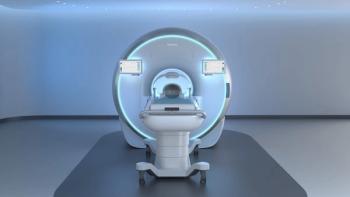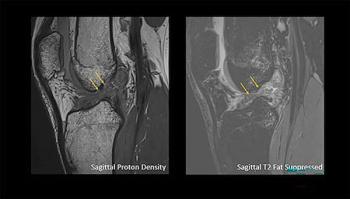
3D, multiplanar strategies build confident diagnoses
Three-D reconstructions are routinely used in the imaging of many organ systems. Not only do referring physicians and patients like the volume-rendered images, but radiologists are finding the inclusion of coronal and sagittal reformats imperative to making the most confident diagnoses. The use of advanced imaging over the last year has become important in several organs, mainly the heart/chest (Figure 1) and the abdomen/pelvis.
Three-D reconstructions are routinely used in the imaging of many organ systems. Not only do referring physicians and patients like the volume-rendered images, but radiologists are finding the inclusion of coronal and sagittal reformats imperative to making the most confident diagnoses. The use of advanced imaging over the last year has become important in several organs, mainly the heart/chest (Figure 1) and the abdomen/pelvis.
The advantages of high spatial resolution with 64-slice scanners are overshadowed by the 10-fold increase in images per case. But this liability is offset by isotropic imaging, which helps produce perfect reconstructions in any plane, thereby allowing radiologists to read fewer axial images, while supporting their diagnosis with 3D and reformatted images. Radiologists are increasingly striving to find the right combination of axial and reformatted images to use to make a diagnosis. Consensus is that multiplanar and axial images should be read in concert.
For those researching advanced postprocessing, companies to visit at the RSNA meeting include Barco, GE Healthcare, Mercury Computer, Philips Medical Systems, Siemens Medical Solutions, TeraRecon, and Vital Images Biotronics3D.
A driving force behind the use of 3D imaging has been 64-slice CT scanning, but MRI is also gaining a new foothold in 3D imaging. Dr. Lawrence Tanenbaum, section chief of CT, MRI, and neuroradiology at New Jersey Neuroscience Institute, said that advances such as parallel imaging and new fast-spin echo pulse sequences such as XETA and SPACE have made 3D techniques more attractive and practical. Tanenbaum expects these to become clinically commonplace in neurological, musculoskeletal, and body imaging.
Nowhere has the use of advanced imaging become so important as in abdominal imaging. It is especially useful for pancreatic cancer and biliary pathology, according to Dr. Eric P. Tamm, an associate professor of radiology at the University of Texas M.D. Anderson Cancer Center in Houston. Radiologists can use 3D imaging to solve problems and to help consultations with referring clinicians.
CT enterography is now the first-line exam to image the bowel, and multiplanar imaging plays a large role in this advance, according to Dr. Alec Megibow, a professor of radiology at the New York University Medical Center in New York City. Three-D displays are ideally suited to depict the location and extent of bowel involvement in Crohn's disease (Figure 2). Reformatted images are also advantageous in viewing small bowel tumors, particularly in their ability to display the information in a plane useful to the operating surgeon and to create angiographic images isolating the major blood supply to the tumor.
Three-D volumetric ultrasound portends a radical alteration in how radiologists in the U.S. view ultrasound, according to Jim Brown, senior director of technical and clinical marketing for Philips Ultrasound. Volumetric imaging that produces 3D images in real-time has made an impact in echocardiology and obstetrics (Figure 3), but it also holds promise in the liver and breast, as well as in the evaluation of fluid-filled organs.
Newsletter
Stay at the forefront of radiology with the Diagnostic Imaging newsletter, delivering the latest news, clinical insights, and imaging advancements for today’s radiologists.




























